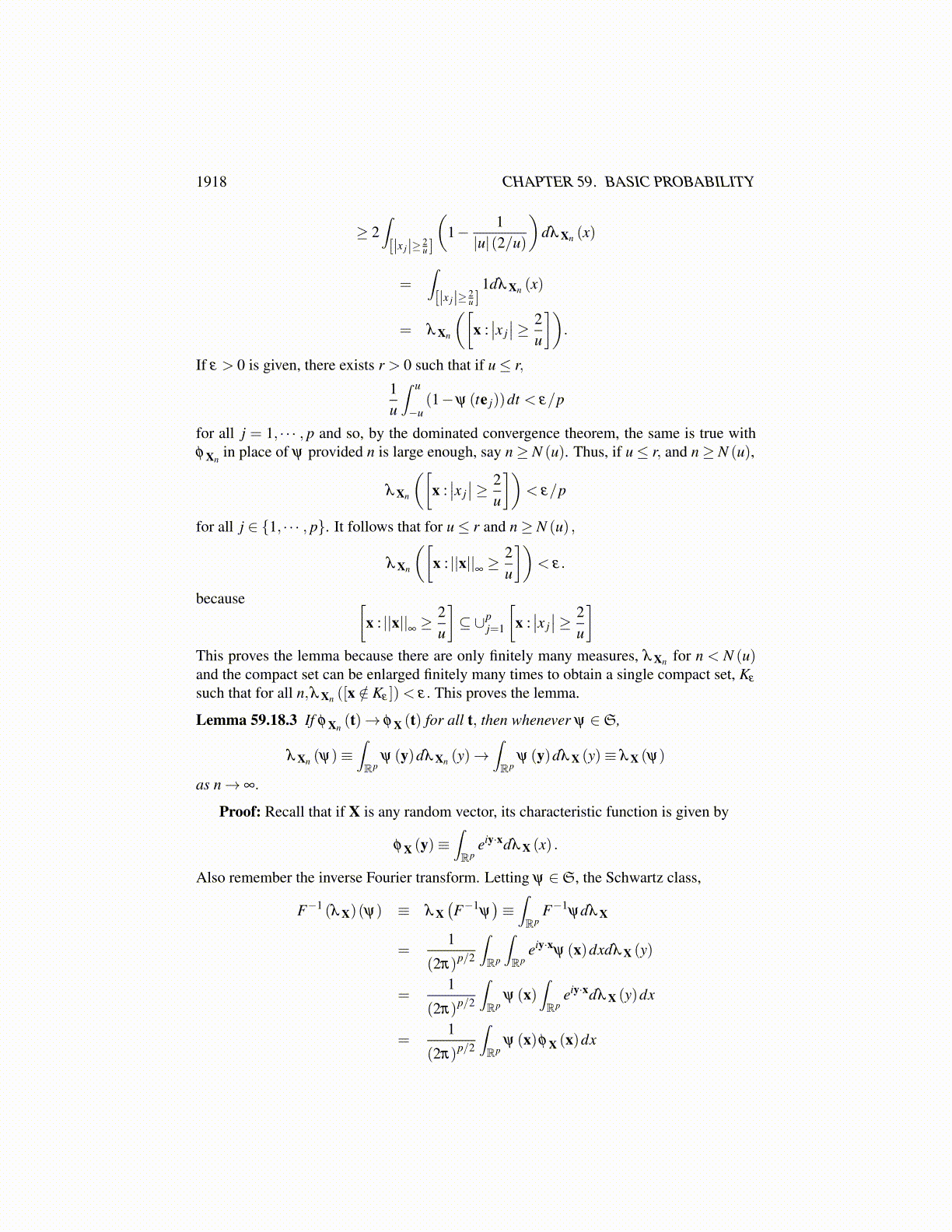
1918 CHAPTER 59. BASIC PROBABILITY
Then this can be used to find moments of the random variable assuming they exist. The kth
moment is defined as
E(
Xk).
This can be done by using the dominated convergence theorem to differentiate the charac-teristic function with respect to t and then plugging in t = 0. For example,
φ′X (t) = E (iX exp(itX))
and now plugging in t = 0 you get iE (X) . Doing another differentiation you obtain
φ′′X (t) = E
(−X2 exp(itX)
)and plugging in t = 0 you get −E
(X2)
and so forth.An important case is where X is normally distributed with mean 0 and variance σ2. In
this case, as shown above, the characteristic function is
e−12 t2σ2
Also all moments exist when X is normally distributed. So what are these moments?
Dt
(e−
12 t2σ2
)=−tσ2e−
12 t2σ2
and plugging in t = 0 you find the mean equals 0 as expected.
Dt
(−tσ2e−
12 t2σ2
)=−σ
2e−12 t2σ2
+ t2σ
4e−12 t2σ2
and plugging in t = 0 you find the second moment is σ2. Then do it again.
Dt
(−σ
2e−12 t2σ2
+ t2σ
4e−12 t2σ2
)= 3σ
4te−12 t2σ2 − t3
σ6e−
12 t2σ2
Then E(X3)= 0.
Dt
(3σ
4te−12 t2σ2 − t3
σ6e−
12 t2σ2
)= 3σ
4e−12 t2σ2 −6σ
6t2e−12 t2σ2
+ t4σ
8e−12 t2σ2
and so E(X4)= 3σ4. By now you can see the pattern. If you continue this way, you find
the odd moments are all 0 and
E(X2m)=Cm
(σ
2)m. (59.17.40)
This is an important observation.